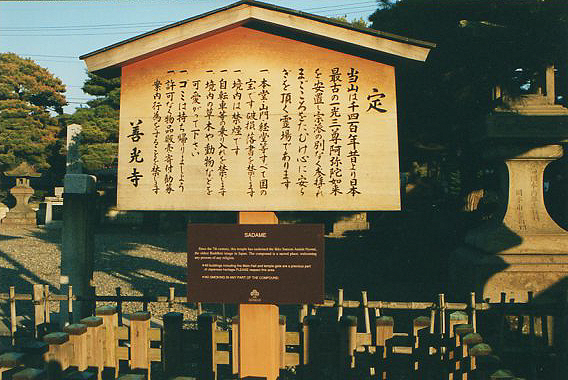More Memories of Japan
The Japanese label their railway stations – and the destination boards – both in kanji and in romaji (western lettering). Thus, armed with a map of the system, you won’t miss your stop – in theory. However, buying a train ticket in Tokyo’s Shinjuku-eki for the first time is an ordeal. You have to get past the automatic ticket machine. A smattering of the spoken language doesn’t help. The problem is pictorial … panic with a capital P!
Luckily, there is a friendly local to help you out. And once learned, the ticketing procedure is easy and the whole country is there to be explored with minimum expense. Avoid the rush hours and you can do it in reasonable comfort.
Today, your destination is Matsumoto, three hours out of Shinjuku to the west. The view gradually changes. Urban agglomeration gives way to middle-class villas with tiny gardens, then to rice fields and small farms. More towns. The train glides into each station and out again within seconds of the scheduled times. Ticket collectors doff their caps and bow as they enter the compartment. On the platform, suited sararimen mingle with cute schoolgirls in ultra-short, pleated skirts and rolled-down chunky stockings. At last you see mountains, distant and snow-capped. The trees still have their autumn colours, but the air is cooler. You enter Nagano Prefecture where Matsumoto nestles in alpine surroundings. Its castle is a national treasure. Begun in 1504 and later remodelled for gun warfare, it has survived the centuries intact.
Westerners are even more conspicuous here than in Tokyo. Small children stare in amazement and nudge their parents excitedly. Gaikoku-jin desu, they whisper loudly. Look, foreigners! However, you soon forget you are different. After a day or two, bowing becomes second nature. People are friendly. You greet strangers in lifts, restaurants, parks and even in the street in this traditional way. Their responsive konnichiwa – hello – is surprised, but spontaneous.
Nagano-shi, the prefecture capital and venue for the 1998 Winter Olympics, is modern metal and glass mixed with touristy shops and shrines. Zenko-ji, one of Japan’s finest temples, proclaims welcome to people of all faiths and beliefs. It lies at the end of a narrow street lined with boutiques peddling lucky charms, enameled chopsticks and paper dolls. There are restaurants too that hide the delights of Japanese cuisine behind curtained doorways and banks of discarded shoes. The menus in bewildering kanji and hiragana lend new meaning to the term pot luck.
Back in Matsumoto, you search unsuccessfully for a memorial to one of its most famous sons. Dr Shinichi Suzuki (1898-1998), violin teacher extraordinaire, gave the city its prestigious music academy. However, it seems his life is celebrated more outside Japan. Just one little statue is testimony to his work. It is early now late November. A warm autumn day. Already the shops are decorated with Christmas trees and festive bunting. Schoolchildren have written Christmas cards and these are posted on message boards. High fashion straight from London, Paris and New York competes with traditional kimono and obi. Suits are Jaeger and Armani. Ladies’ shoes are strapless with fifteen centimeter heels. Apples the size of grapefruit are individually boxed and sell for the price of a modest breakfast. Packaged sashimi meals are worth a king’s ransom.





Wild
LikeLike
Truly!
LikeLike
You make me feel as though I had been there. Great series.
Jim
LikeLike
Thanks, Jim!
LikeLike